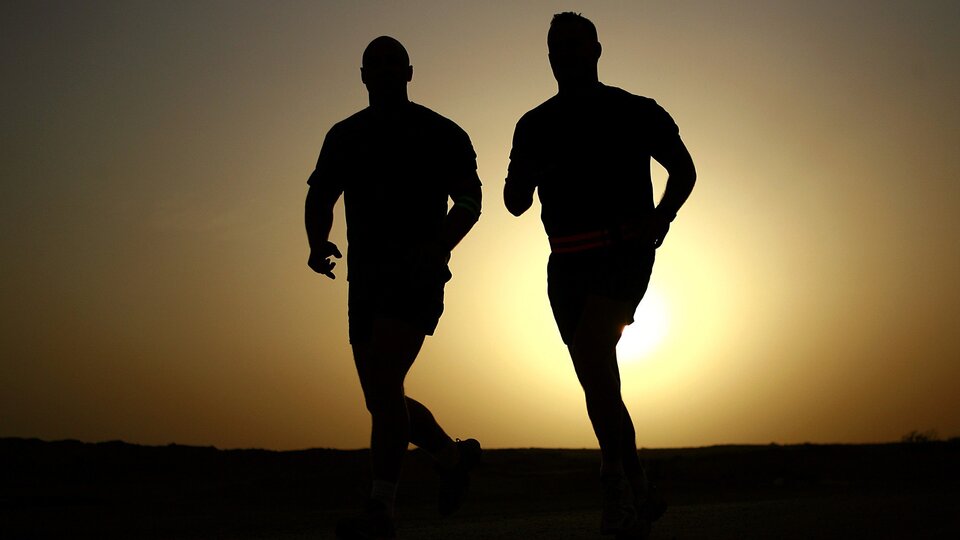Most individuals are incorrectly or inefficiently getting ready for endurance occasions lasting over an hour by specializing in their anaerobic threshold (AT) as a substitute of their cardio threshold (AeT).
If you happen to analyze the endurance coaching packages of elite athletes, you will see that almost all of their mileage is completed at a comparatively gradual tempo inside their cardio threshold. In response to a overview of Coaching Traits of World-Class Distance Runners, elite runners practice 11-14 instances per week and comply with a polarized coaching regime that follows an 80-20 depth break up, the place 80% of their whole operating distance is carried out at low depth inside zone 1-2 and 20%, consisting of mid to excessive depth coaching, inside zone 3-5 (1). This sort of coaching will construct an athlete’s cardio capability and operating economic system whereas permitting the athlete to be well-rested for greater depth exercises (2).
Eliud Kipchoge is arguably the best marathon runner. He earned again to again Olympic gold in 2016 and 2020 for Kenya. He’s the marathon world document holder with a Berlin marathon time of two:01:09. He additionally ran an unofficial sub two hour marathon with the time of 1 hour 59 minutes 40.2 seconds with a mean tempo of 4:33.5 minutes per mile for Ineos 1:59 Problem (3).
In a number of articles, consultants establish Kipchoge’s coaching as basic pyramidal depth distribution. In a simplistic breakdown of his marathon coaching, Kipchoge divides his astounding 130 – 150 weekly miles into alternating between simple, medium, and laborious days with a future each two weeks (4). At coaching camp, he spends 82-84% at a really low depth, about 8:00 per mile tempo, which is an “simple run” compared to his marathon tempo of 4:35 per mile. He does about 9-10% at reasonable depth and 7-8% at very excessive depth (5). This plan permits him to coach sufficient quantity to construct cardiovascular system whereas permitting him sufficient time to get better in order that he can have peak efficiency on his excessive depth monitor periods on Tuesday and his future on Thursday (6). This may even permit him to be properly rested for race day.
Right here is an instance of what Operating Coach Patrick Sang would program for Kipchoge earlier than the London Marathon (7):
-
Monday AM: 10-13 Miles, Straightforward, Coronary heart Charge Zone 1
-
Monday PM: 6-8 Miles, Straightforward, Coronary heart Charge Zone 1
-
Tuesday AM: 10 Miles, HIIT, Coronary heart Charge Zone 4
-
Tuesday PM: Relaxation
-
Wednesday AM: 10-13 Miles, Straightforward, Coronary heart Charge Zone 1
-
Wednesday PM: 5-8 Miles, Straightforward, Coronary heart Charge Zone 1
-
Thursday AM: 18 or 24 Miles, Straightforward to Medium, Coronary heart Charge Zone 1-3
-
Thursday PM: Relaxation
-
Friday AM: 10-13 Miles, Straightforward, Coronary heart Charge Zone 1
-
Friday PM: 5-8 Miles, Straightforward, Coronary heart Charge Zone 1
-
Saturday AM: 8-10 Miles, Fartlek (Tempo Runs), Coronary heart Charge Zone 1-3
-
Saturday PM: 5-8 Miles, Straightforward, Coronary heart Charge Zone 1
-
Sunday AM: 10-13 Miles, Straightforward, Coronary heart Charge Zone 1
-
Sunday PM: Relaxation
Many contributors in half marathons, full marathons, triathlons, or impediment races, practice utterly in another way, with the vast majority of their coaching consisting of lengthy runs at medium to excessive depth. Nonetheless, if you wish to enhance your race outcomes, you have to be focusing in your cardio capability.
The human cardiovascular system makes use of three distinct however interrelated vitality pathways to gasoline your muscle tissue. The anaerobic vitality system is split into alactic and lactic. The alactic system refers back to the technique of splitting saved ATP and phosphocreatine (PCr) for brief length explosive vitality. Lactic system refers to breakdown of carbohydrate to lactic acid by way of glycolysis for prime depth output lasting underneath three minutes. The cardio system refers back to the combustion of carbohydrates and fat within the presence of oxygen for your entire different vitality wants (8).
When your coronary heart fee is beneath your cardio threshold, your physique will effectively burn fats as vitality and your tempo may be maintained for a really very long time. As you pace up, you’ll go your cardio threshold, and your physique will begin utilizing each fats and carbohydrates for gasoline. As you pace up additional, you’ll hit your lactate threshold, which causes your physique to modify to utilizing depletable anaerobic vitality sources that may finally drive you to cease or decelerate (9).
As an endurance athlete, your objective needs to be to maximise your cardio variations. First, you must practice your zone 1 cardio as a lot as doable, which can be merely strolling or jogging on a treadmill. One examine discovered that untrained people elevated their cardio capability when coaching based mostly on cardio threshold versus VO2 max (10). Second, you must give attention to retaining your coronary heart fee low throughout your lengthy runs as a substitute of specializing in quick tempo (11). Third, you must commit 10-15% of your coaching on excessive depth exercises to enhance your VO2 max, which might increase your zone 1 coronary heart zone (12).
Works Cited:
-
https://therunningclinic.com/runners/weblog/train-like-kipchoge/
-
https://www.trailrunnermag.com/coaching/trail-tips-training/kipchoge-training-takeaways/
-
https://olympics.com/en/information/eliud-kipchoge-marathon-revolutionary-training-methods
-
https://www.ineos159challenge.com/information/patrick-sang-on-eliud-kipchoge/

